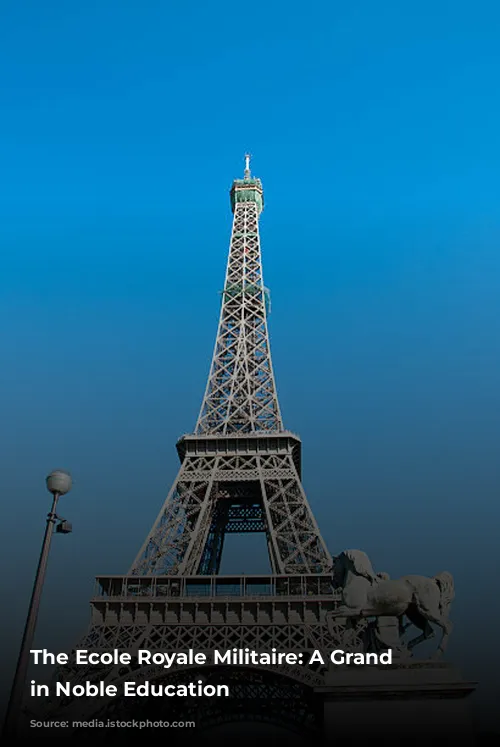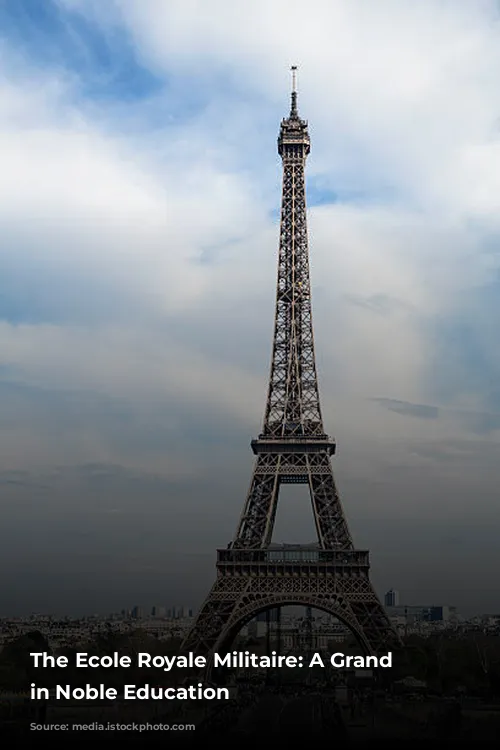This article delves into the fascinating history of the Ecole Royale Militaire in Paris, a school established in the 18th century with the ambitious goal of shaping a new generation of military leaders. We will explore the school’s origins, its struggles, and its ultimate failure, while examining the ideas and forces that shaped its development.
From Saint-Cyr to the Ecole Royale Militaire: A Legacy of Reform
The Ecole Royale Militaire was not a completely novel idea. It emerged from a long tradition of reform in education, especially in the wake of the establishment of the Saint-Cyr school for girls in 1686. This school aimed to provide a rigorous education for the daughters of impoverished noble families, emphasizing discipline and virtue. The Ecole Royale Militaire sought to build upon this model, focusing on the education of young men destined for military service.
Shaping a New Breed of Officer: Noble Ideals and Practical Realities
The Ecole Royale Militaire aimed to create a new type of officer, one who combined noble lineage with a thorough understanding of military science and strategy. To ensure this, the school established a rigorous selection process, focusing on proof of nobility, financial hardship, and a family history of military service. This process reflects the ongoing debates of the time about the role of nobility in society and the importance of professionalization in the military.
Emulation as a Guiding Principle: Fostering Excellence Through Competition
The founders of the Ecole Royale Militaire embraced the concept of emulation, believing that competition among students would drive them to excel. This competitive spirit, coupled with a rigorous curriculum, formed the core of the school’s educational philosophy. The goal was not only to impart knowledge but also to instill in its students a strong sense of discipline, patriotism, and the desire to surpass their peers.

From Verona to Modena: Adapting a Military School to a Changing World
The Collegio Militare di Verona was a shining example of a military school during the Ancien Régime (the period before the French Revolution). Established in 1759 by the Republic of Venice, the Collegio Militare aimed to train a new generation of officers who could meet the increasingly sophisticated demands of modern warfare. This school embraced a more scientific approach to military education, reflecting the changing nature of warfare in the late 18th century.
Adapting to the Napoleonic Era: The Evolution of Military Education
With the rise of Napoleon, the Collegio Militare di Verona was transformed into the Scuola Nazionale di artiglieria e genio di Modena. This transition reflects the broader changes sweeping across Europe during the Napoleonic era. The school’s curriculum was adapted to meet the needs of the Napoleonic army, emphasizing the development of skills in artillery and engineering.
Continuity and Change: A Venetian Legacy in a New Era
While the Napoleonic era brought about significant changes to the school’s curriculum and its purpose, it’s important to recognize the continuity of its legacy. The Collegio Militare di Verona established a model for military education that influenced future generations of military academies, even under the Napoleonic regime. This legacy reflects the enduring value of strong educational foundations and the ability of institutions to adapt to changing circumstances.

Mograne: A Monument to Modernity in Tunisia
The Higher School of Agriculture of Mograne stands as a testament to the influence of the Modern Movement in Tunisia. Designed by architect Jean Pierre Ventre and built between 1947 and 1952, the school embodies the ideals of functionalism and integration with the surrounding environment.
A Bold Expression of Modernism in a Traditional Context
The Mograne school was conceived as a symbol of modernity, a deliberate break from the traditional architectural heritage of Tunisia. The building’s layout reflects a focus on functionality and efficiency, with each space carefully designed to serve its purpose. The use of horizontal and vertical lines gives the building a monumental character, while the integration of natural elements like sun shading demonstrates a sensitivity to the local climate and environment.
A Legacy in Peril: The Need for Preservation and Revitalization
Despite its architectural significance, the Mograne school faces a serious threat: neglect. Several annex buildings have fallen into disrepair, and the school itself is in need of restoration and revitalization. This calls for urgent action to protect this important architectural heritage and to ensure that it remains a vibrant part of the Tunisian landscape.
A Case for Recognition: Preserving a Monument to Modernity
The Mograne school represents a vital link to the architectural heritage of the Modern Movement in Tunisia. Its architectural design, its functional efficiency, and its environmental sensitivity make it a valuable landmark. Its preservation and revitalization are essential for ensuring that this important architectural legacy endures for future generations.
The City of Paris: A Flourishing Architectural Landscape in the Late 14th Century
The late 14th century was a period of significant architectural activity in Paris, fueled by the patronage of the Valois Kings and princes. This era marked a revival of architectural grandeur, as the city transformed under the leadership of Charles V and his successors.
A Period of Renewal and Expansion
Following a period of instability, the Valois dynasty sought to solidify their power and project an image of strength and prosperity. This ambition manifested itself in a wave of ambitious architectural projects in Paris. The kings, particularly Charles V, invested heavily in expanding and enhancing the city’s fortifications, palaces, and churches, leaving a lasting mark on the urban landscape.
The Royal Princes: Architects of a Grand Vision
The Valois princes, like Jean, Duke de Berry, Philip the Bold, and Louis of Anjou, played a significant role in shaping the architectural character of Paris. They commissioned lavish projects in both the capital and in provincial towns, showcasing their wealth and influence. Their patronage helped to establish Paris as a center of architectural excellence, drawing talent from across the kingdom.
A Flourishing of Talent: From Beauvais to La Grange
The Valois kings also encouraged prominent architects beyond their own family, like Beauvais and La Grange, to contribute to the revival of Parisian architecture. Their influence spread to the aristocracy, both lay and ecclesiastical, creating a flourishing of architectural activity that transformed the city’s appearance.
A Lasting Legacy: The Flourishing of the Valois Period
The architectural achievements of the late 14th century under the Valois dynasty left an enduring legacy on Paris. The buildings and monuments constructed during this period continue to grace the city’s landscape, serving as testaments to the ambition and creativity of the era. The influence of the Valois kings and princes on Parisian architecture is undeniable, shaping the city into the architectural powerhouse it is today.
